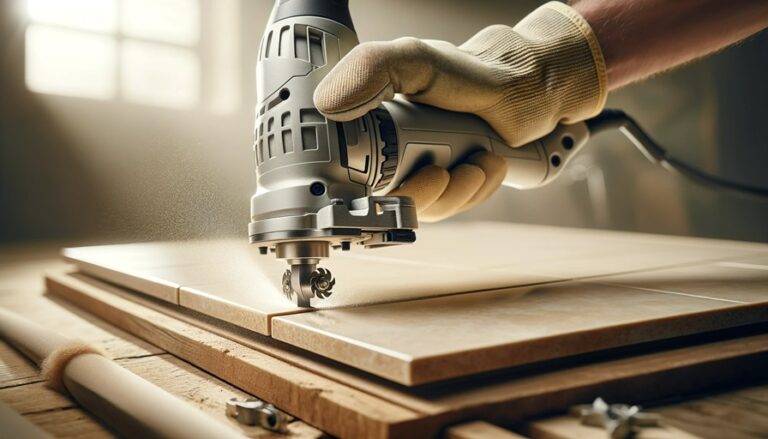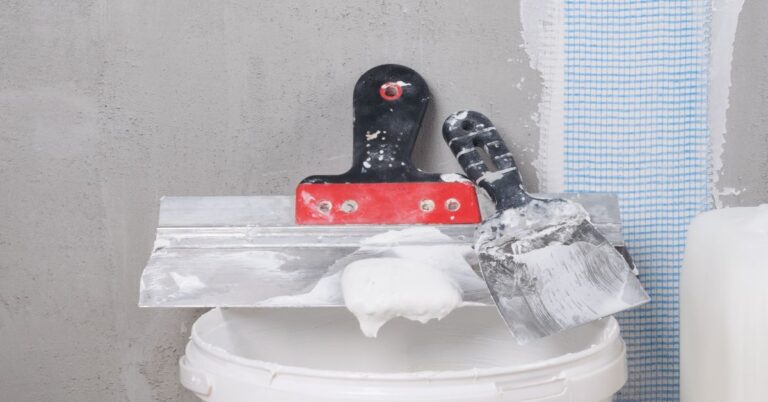How Loud Is a Jig Saw: Decibel Levels and Hearing Protection
Jigsaws are versatile power tools essential for many DIY and woodworking projects. Their distinctive sound can be a concern for users and those nearby. A typical jigsaw produces noise levels between 85 and 95 decibels, comparable to the sound of heavy traffic or a lawnmower.
A jigsaw’s noise comes from its motor and the blade’s interaction with the cut material. Various factors influence the tool’s loudness, including the specific model, blade type, and the material being worked on.
Understanding jigsaw noise levels is crucial for those sensitive to noise or working in shared spaces. Fortunately, there are ways to minimize the sound impact without sacrificing the tool’s effectiveness.
Key Takeaways
- Jigsaws typically produce noise levels of 85-95 decibels during operation
- Factors like tool model, blade type, and material affect jigsaw noise output
- Noise reduction techniques can help minimize sound impact in shared workspaces
Understanding Jigsaw Noise Levels
Jigsaws produce significant noise during operation, impacting both users and bystanders. The intensity of this noise varies depending on several factors and can be compared to other typical power tools.
Decibels and Hearing Protection
Jigsaws typically generate noise levels between 85 and 100 decibels (dB). Exposure to sounds above 85 dB for extended periods can damage hearing. The Occupational Safety and Health Administration (OSHA) recommends hearing protection for noise levels exceeding 85 dB over an 8-hour workday.
Wearing earplugs or earmuffs is crucial for jigsaw users to prevent noise-induced hearing loss. These protective devices can reduce noise exposure by 15 to 30 dB, significantly lowering the risk of hearing damage.
Comparing Jigsaw Noise to Other Power Tools
Jigsaws are generally quieter than many other power tools. Here’s a comparison of average noise levels:
- Jigsaw: 85-100 dB
- Circular saw: 100-110 dB
- Miter saw: 95-105 dB
- Reciprocating saw: 95-110 dB
While jigsaws are less noisy, they still require hearing protection. Users should know that combining multiple power tools in a workspace can increase noise levels.
Factors Affecting Jigsaw Noise
Several elements influence the noise level of a jigsaw:
- Motor power and quality
- Blade type and condition
- Material being cut
- Speed settings
Higher-quality jigsaws often incorporate noise-reduction features, such as improved motor insulation or vibration-dampening technology. Using sharp, appropriate blades for cutting material can also help minimize noise.
The type of material being cut significantly affects noise levels. Cutting more complex materials like metal or dense hardwoods produces more noise than softer materials like plywood or plastic.
Key Features of Jigsaws for Quiet Operation
Jigsaws can be designed with several features to minimize noise during operation. These include advanced motor technology, high-quality blades, and adjustable speed settings.
Brushless Motors and Vibration Reduction
Brushless motors significantly reduce noise in jigsaws. They operate more efficiently than traditional brushed motors, producing less friction and vibration. This leads to quieter performance and extended tool life.
Many modern jigsaws incorporate vibration reduction systems. These systems use counterweights or other mechanisms to offset the vibration caused by the blade’s reciprocating motion. Reduced vibration results in less noise and improved cutting accuracy.
Some manufacturers employ rubber grip designs and isolating components to dampen vibrations further. These features decrease noise and enhance user comfort during extended use.
Blade Quality and Type
High-quality, sharp blades contribute to quieter jigsaw operation. Dull or low-quality blades can increase friction and vibration, leading to more noise during cutting.
T-shank blades are famous for their secure fit and reduced vibration. They lock firmly into the jigsaw, minimizing movement and associated noise.
Blades with fewer, more prominent teeth typically produce less noise than those with many small teeth. However, the ideal blade depends on the cut material and the desired finish.
Some manufacturers offer specialized low-noise blades. These often feature unique tooth designs or coatings to reduce friction and noise during cutting.
Variable Speed Settings
Variable speed settings allow users to adjust the blade’s reciprocation rate. Lower speeds generally produce less noise, making them suitable for noise-sensitive environments.
Many jigsaws offer electronic speed control. This feature maintains a consistent speed under load, reducing sudden noise increases during tough cuts.
Some advanced models include soft-start technology. This gradually increases the blade speed, reducing the initial noise surge when the tool is activated.
Matching the speed setting to the cut material can optimize performance and minimize unnecessary noise. More rigid materials often require slower speeds, while softer materials can be cut at higher speeds.
Optimizing the Work Environment for Noise Control
Effective noise control measures can significantly reduce jigsaw noise levels in the work environment. Proper workspace arrangement, sound-absorbing materials, and correct tool usage techniques are crucial in minimizing noise exposure.
Noise Control Measures and Workspace Arrangement
Strategically arranging the workspace helps contain and reduce jigsaw noise. Positioning the cutting area away from walls prevents sound reflection. Creating dedicated cutting zones isolates noise sources from quieter work areas.
Enclosing the jigsaw operation with temporary barriers or screens can contain sound. For maximum effectiveness, these barriers should be lined with sound-absorbing materials.
Occupational Safety and Health Administration (OSHA) guidelines recommend maintaining a safe distance between workers and noise sources. This reduces direct exposure and protects workers’ hearing.
Using Sound-Absorbing Materials
Sound-absorbing materials are essential for reducing jigsaw noise in the work environment. Acoustic panels, foam, or fiberglass insulation can be installed on walls and ceilings to absorb sound waves.
Rubber mats placed under cutting stations dampen vibrations and reduce noise transmission through floors. Hanging heavy curtains or quilts around the work area can also help absorb sound.
Sound-absorbing blankets can be draped over temporary frames for portable setups to create noise-reducing enclosures. These materials are particularly effective for high-frequency sounds produced by jigsaws.
Proper Jigsaw Usage and Technique
Correct jigsaw operation significantly impacts noise levels. Maintaining a firm stance and proper grip on the tool reduces vibrations and unwanted noise.
Selecting the appropriate blade for each material ensures cleaner cuts and less noise. Dull or damaged blades create more friction and noise, so regular blade replacement is crucial.
Accurate alignment of the cut line minimizes blade wandering. It reduces noise from unnecessary material contact. Using a guide or fence for straight cuts improves precision and reduces noise-producing errors.
Applying steady, even pressure while cutting prevents jerky movements that generate extra noise. Letting the tool do the work without forcing it results in smoother, quieter operation.
Additional Considerations for Jigsaw Users
Effective use of a jigsaw requires attention to maintenance and safety. Proper care and precautions ensure optimal performance and minimize risks.
Jigsaw Maintenance and Blade Replacement
Regular maintenance keeps jigsaws in top condition. Clean the tool after each use, removing dust and debris from vents and moving parts. Lubricate the blade guide roller periodically to ensure smooth operation.
Blade replacement is crucial for performance. Dull blades decrease cutting efficiency and increase noise levels. Check blades frequently for wear or damage. Most jigsaws feature tool-free blade change systems for quick swaps.
When changing blades, follow the manufacturer’s instructions for your specific jigsaw model. Ensure the blade is securely fastened before use. Keep a variety of blades on hand for different materials and cut types.
Safety Precautions for DIYers and Woodworkers
Safety is paramount when using jigsaws. Always wear eye protection and hearing protection. Use a dust mask in poorly ventilated areas. Secure workpieces firmly to prevent movement during cutting.
Keep hands away from the blade and cutting path. Use both hands to control the jigsaw for stability. Unplug the tool when changing blades or performing maintenance.
Let the blade reach full speed before starting a cut. Avoid forcing the saw through the material, which can cause blade breakage. Allow the tool to cool between extended use periods to prevent overheating.



